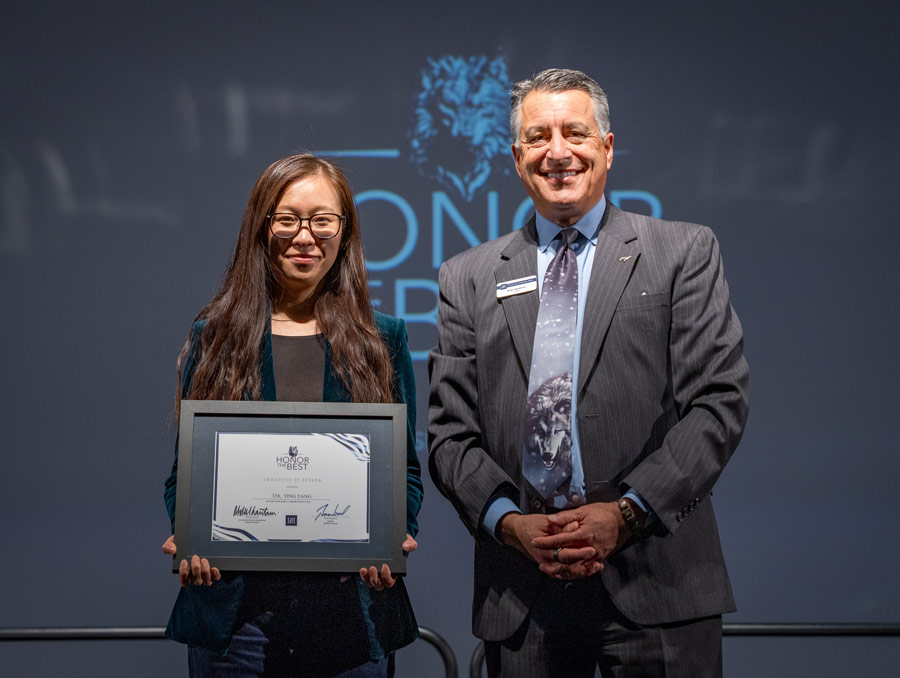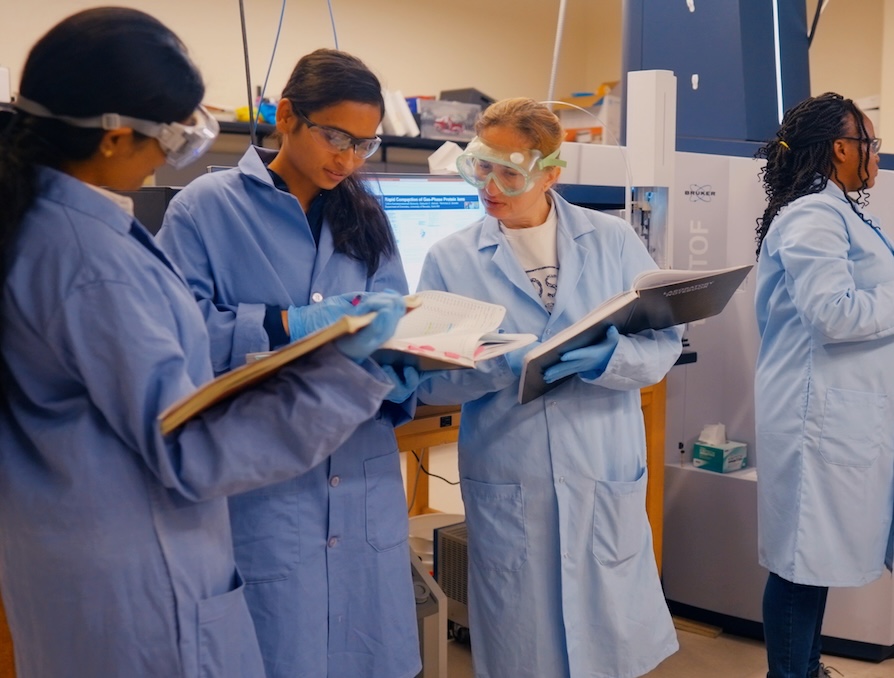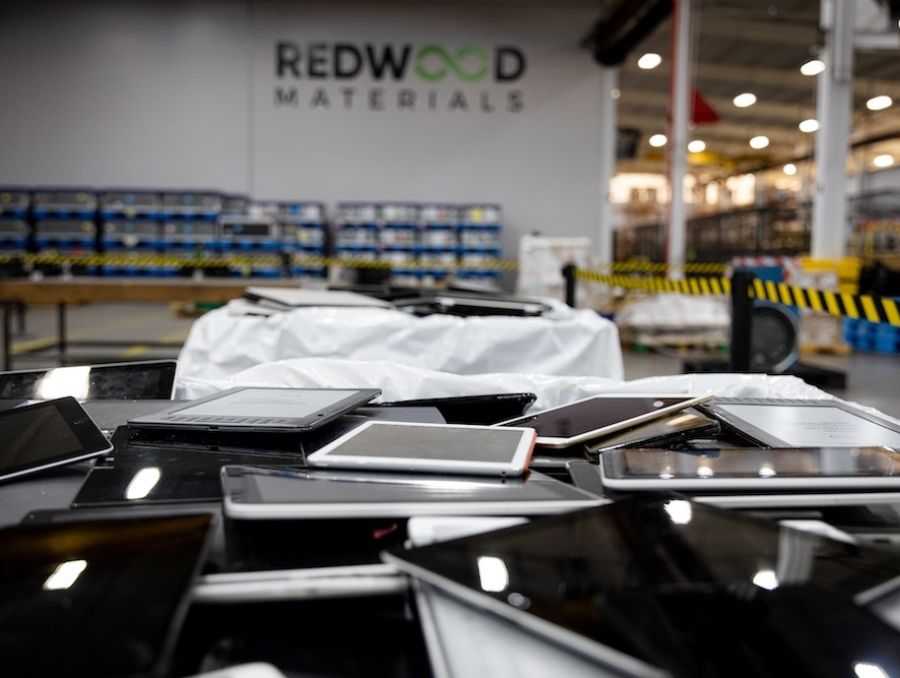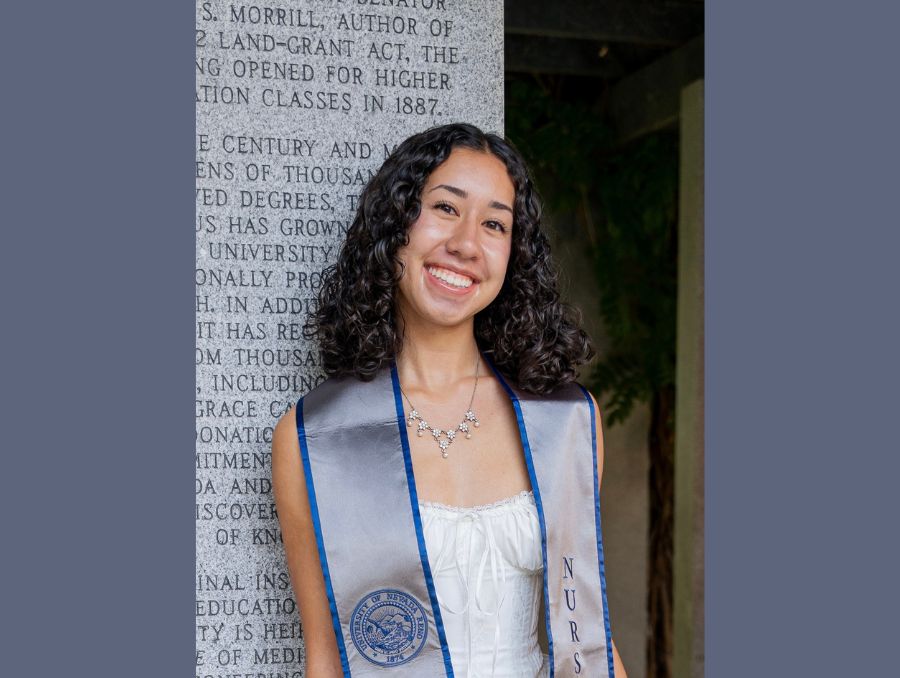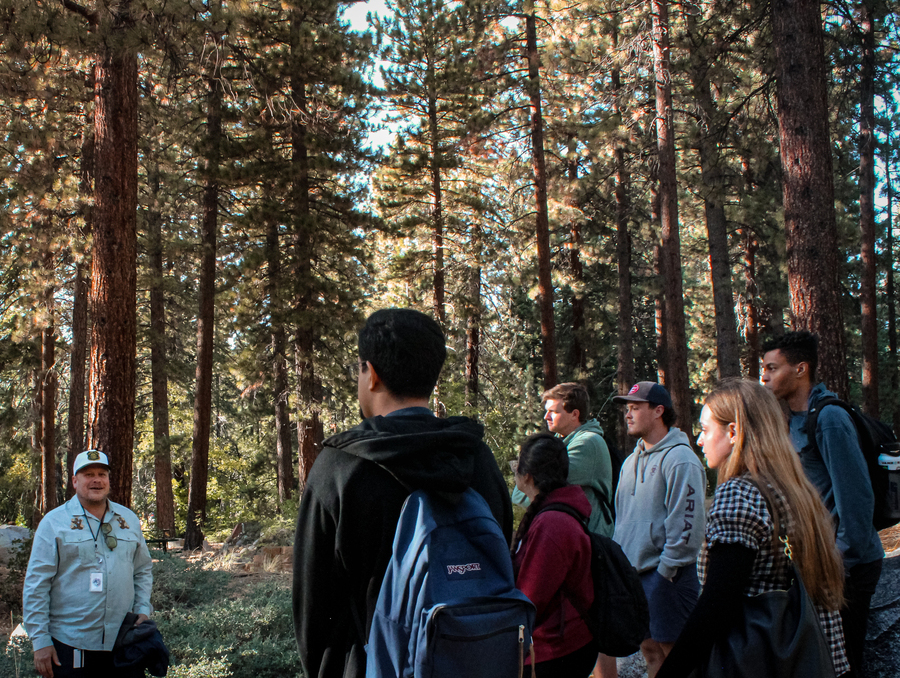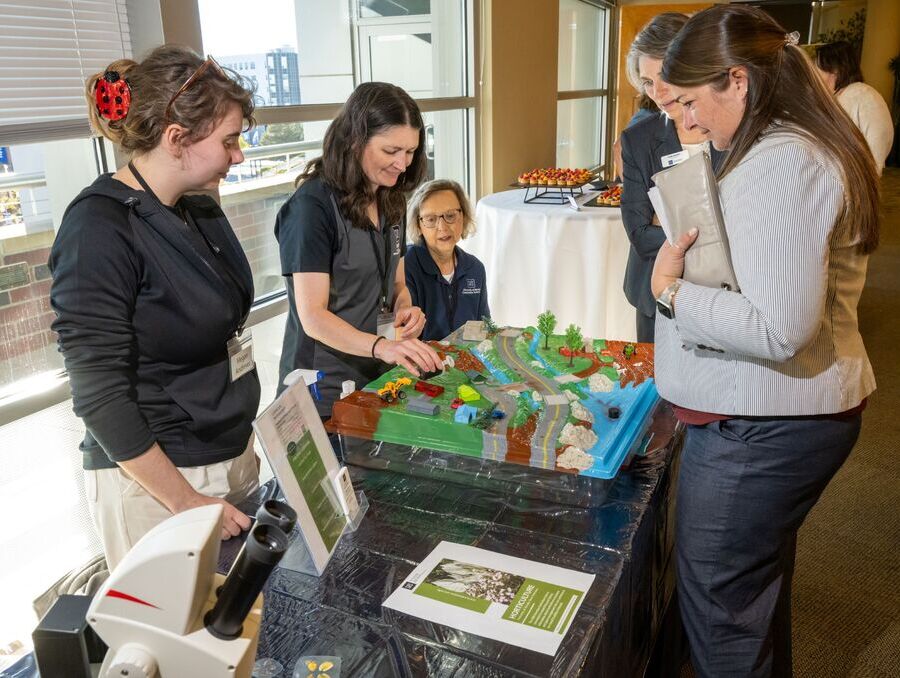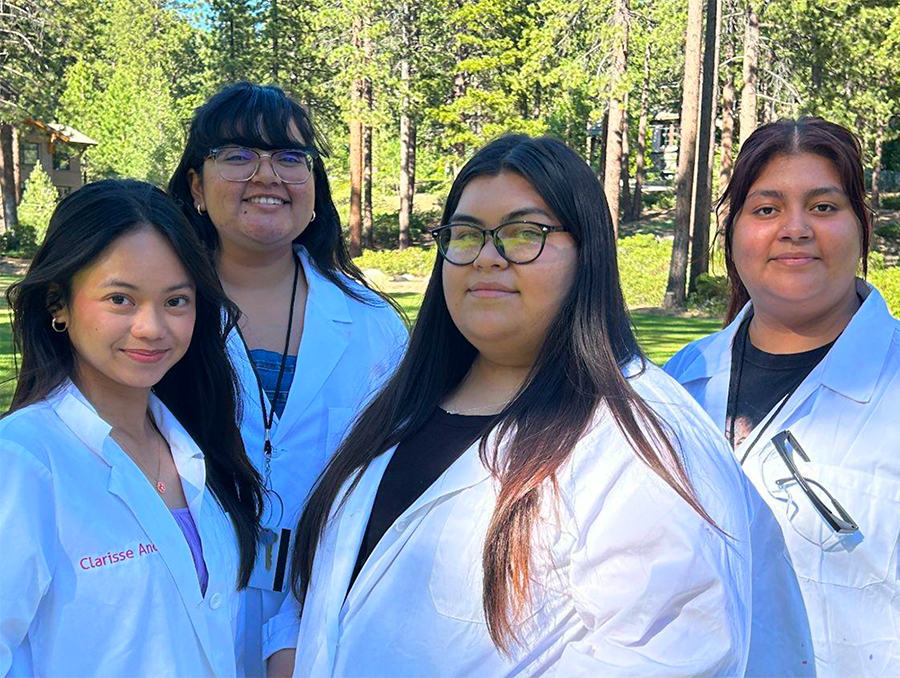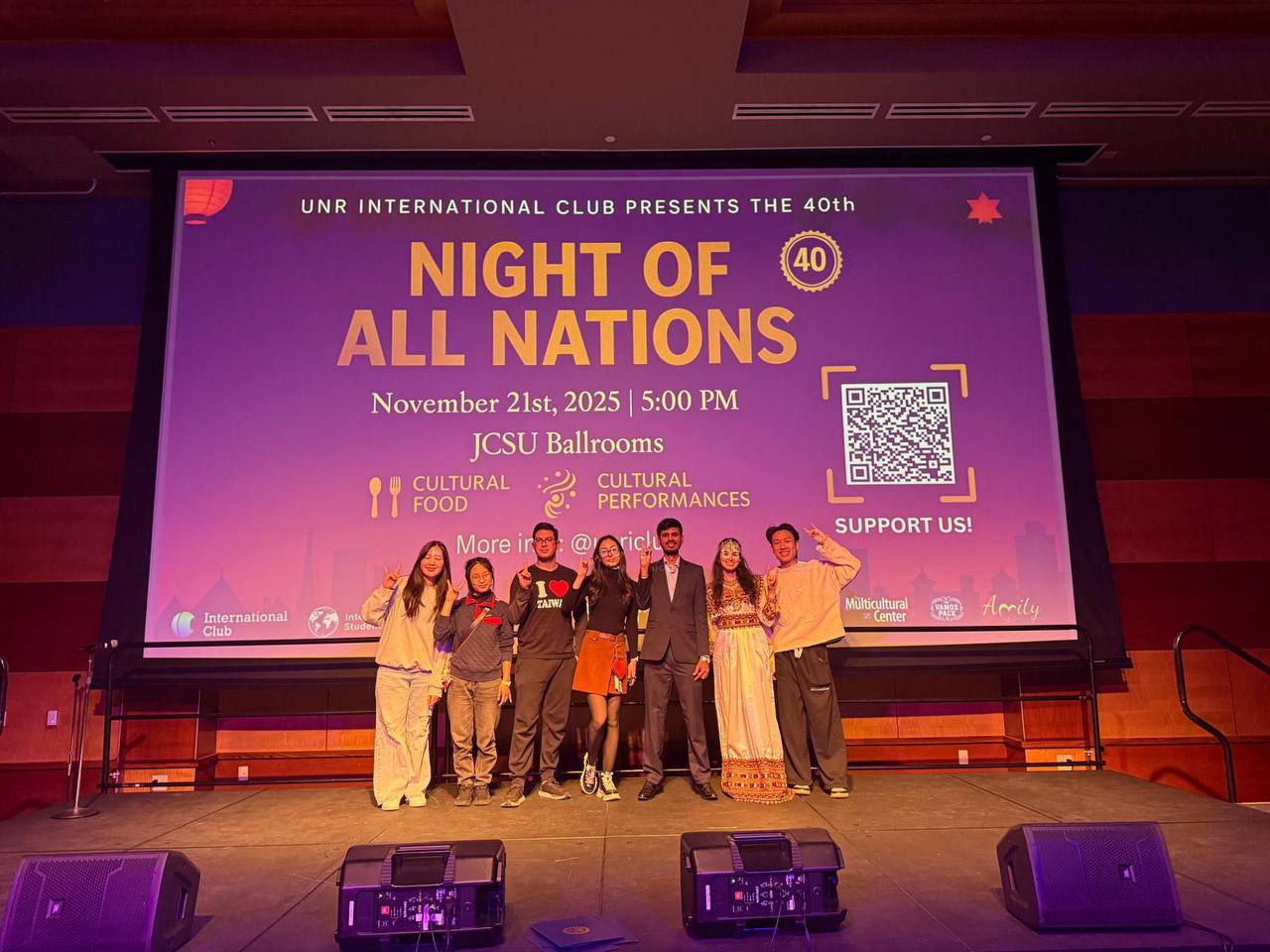Assistant Professor Ying Yang in the Department of Chemistry was recently named the 2025 Foundation Early Career Innovator, a University-wide award given by Research & Innovation. The award comes with $5,000 to continue her aptitude for innovation.
"There are many things that make this job very enjoyable for me. Seeing the students grow over the years through persistent and hard work into independent researchers is definitely one of them." - Yang
Yang works with polymers, chains of molecules known as polymers which are hugely important in the field of chemistry. Yang who began working at the University in 2019, has already made great an impact in her field, inventing a new polymer that could be used in highly recyclable plastics and successfully applying for a provisional patent for that polymer. In 2022, Yang earned a National Science Foundation CAREER award, enabling her innovative work. Below, Yang shares her thoughts on the work she has done so far.
What makes research innovative, in your opinion?
Research is about going into the realm of unknowns. As researchers, we are driven by the desire and curiosity to continuously create new knowledge that advances the understanding of the physical world, addresses societal challenges and develops new technologies that drive our society forward.
What research projects of yours do you feel were most innovative?
We are working on developing sustainable plastics. A global environmental issue we are currently facing is the plastic waste problem. This is a result of the traditional linear economic model of taking raw materials from nature, making the product, using and then discarding it as waste. The desirable qualities that make plastic usage so prolific – durability and stability – are the same qualities causing long-lasting pollution problems. Plastics enter the environment during all phases of their life cycle and occur in various sizes from microplastics to decommissioned wind turbine blades. As a result, plastics are present in the oceans, fresh air and water. Thus, they are widely found in plants, animals and even human bodies. Meanwhile, global plastic production is projected to further increase significantly in the coming decades. They’re lightweight along with many other properties making them irreplaceable materials for numerous sectors, including construction, transportation, biomedical devices, robotics and more. Therefore, a pressing need is to design new plastic materials that are highly recyclable.
My team designed a new polymerization chemistry that utilizes ring opening and closing polymerization strategies to prepare recyclable polydithioacetals. This provides a viable alternative to the widespread use of non-degradable vinyl plastics. Polydithioacetals are long chain macromolecules in which the main polymer backbone contains the chemical element sulfur in addition to carbon commonly seen in commodity plastics. This class of polymers is chemically stable. At their end-of-life, they can be degraded to their feedstock (we call them monomers) which can be used to make either the same material or other types of materials. This newly designed material addresses two major limitations facing traditional mechanical recycling: the quality of the recycled product decreases due to undesired molecular degradation; and mechanical recycling does not work for thermosetting materials, including rubber, foam, composites and many high-performance plastics.
The team has also demonstrated tunability of the mechanical properties, making it suitable for broad applications. Using a combination of different feedstock molecules, polydithioacetal polymers can be made into a rigid glassy product similar to the commonly seen polystyrene. It can also be formulated into adhesive, rubber and soft plastics with similar properties to low-density polyethylene. The latter is the most broadly used packaging material. As mentioned earlier, adhesives, rubbers and rigid plastics used for making composites are not recyclable with currently technologies. Our team showed a strategy of redesigning such materials using the polydithioacetal chemistry, making them recyclable by mechanical recycling and depolymerization strategies.
How does your field of chemistry lend itself to creativity and innovation?
Chemistry allows us to design materials at a molecular level. In our field of soft polymer materials, unique properties arise from molecular structures and interactions. It is like designing your own LEGO. You first have a vision about the end product, and then create a pathway using molecules instead of LEGO blocks, relying on creative thinking and logical reasoning in addition to grasping existing knowledge. It is not uncommon that in the end, you'll end up with something you've never thought of after many failed trails. This is the challenging but also intellectually stimulating part of research.
How does working with your students help you stay creative?
Our graduate students and postdoctoral scholars are at the forefront of research work. We work together in formulating ideas. The students and postdocs are the ones who are designing and running the experiments, making observations and interpreting the results. We work as a team. There are many things that make this job very enjoyable for me. Seeing the students grow over the years through persistent and hard work into independent researchers is definitely one of them.
What does this award mean to you?
It is highly encouraging to win this award. When I started this career in 2019, I was thinking about how I would use my years of training in polymer science to contribute to addressing societal needs. My team and I will continue this path in making polymer materials more sustainable.
What current/upcoming research projects of yours are you most excited about?
My group is also interested in designing bio-inspired materials. Biological systems are highly dynamic. They change their properties in response to their surrounding environment. For example, octopuses change their color for camouflage, some flowers can open and close with the daily cycle of light and darkness, bones self-strengthen under mechanical loading. We are designing polymers that can change their stiffness and deformability under different mechanical environments, making them mechanically adaptable smart materials.
